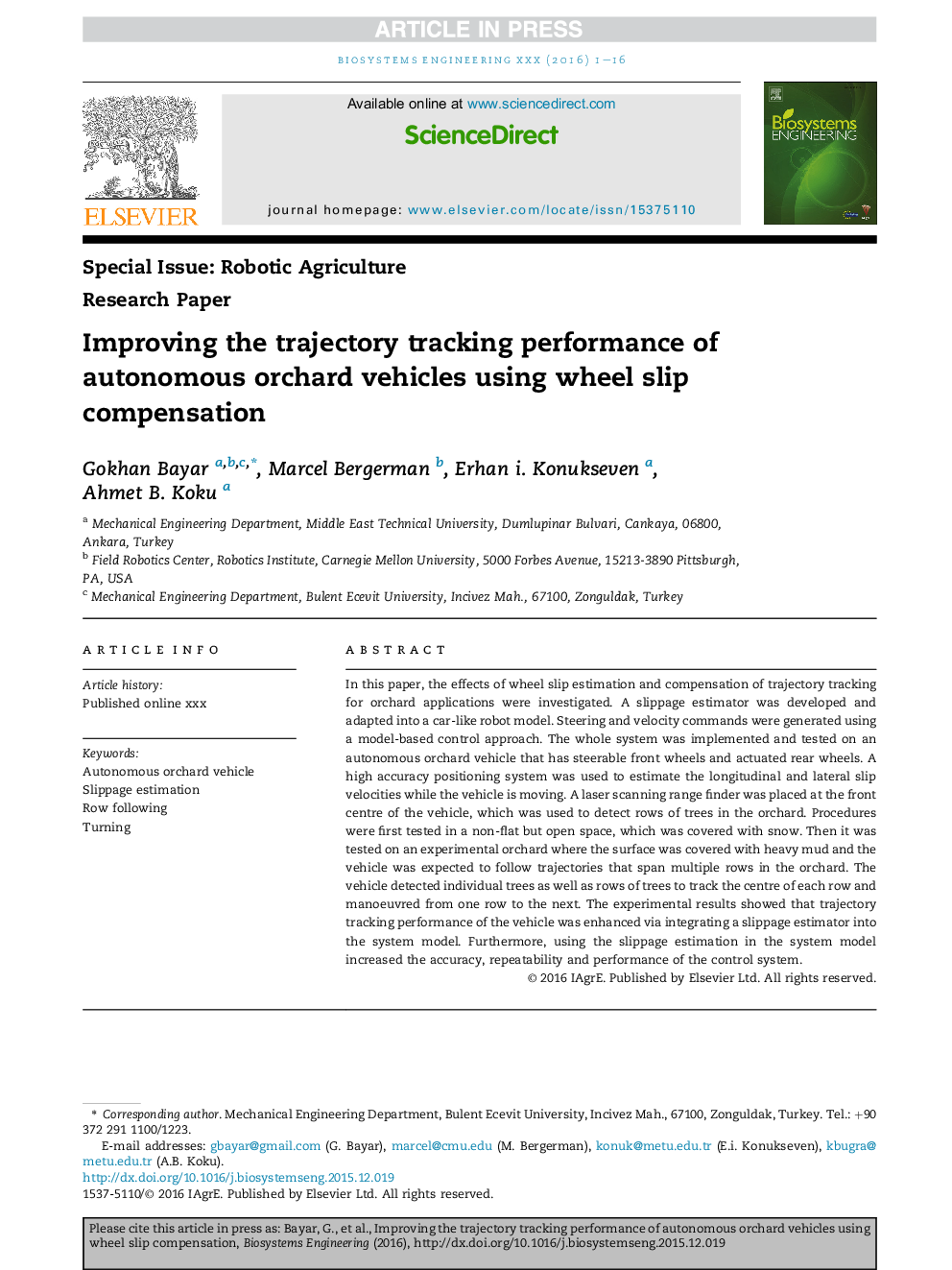| Article ID | Journal | Published Year | Pages | File Type |
|---|---|---|---|---|
| 8055131 | Biosystems Engineering | 2016 | 16 Pages |
Abstract
In this paper, the effects of wheel slip estimation and compensation of trajectory tracking for orchard applications were investigated. A slippage estimator was developed and adapted into a car-like robot model. Steering and velocity commands were generated using a model-based control approach. The whole system was implemented and tested on an autonomous orchard vehicle that has steerable front wheels and actuated rear wheels. A high accuracy positioning system was used to estimate the longitudinal and lateral slip velocities while the vehicle is moving. A laser scanning range finder was placed at the front centre of the vehicle, which was used to detect rows of trees in the orchard. Procedures were first tested in a non-flat but open space, which was covered with snow. Then it was tested on an experimental orchard where the surface was covered with heavy mud and the vehicle was expected to follow trajectories that span multiple rows in the orchard. The vehicle detected individual trees as well as rows of trees to track the centre of each row and manoeuvred from one row to the next. The experimental results showed that trajectory tracking performance of the vehicle was enhanced via integrating a slippage estimator into the system model. Furthermore, using the slippage estimation in the system model increased the accuracy, repeatability and performance of the control system.
Keywords
Related Topics
Physical Sciences and Engineering
Engineering
Control and Systems Engineering
Authors
Gokhan Bayar, Marcel Bergerman, Erhan i. Konukseven, Ahmet B. Koku,
